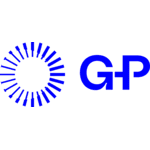One of the hardest aspects of human resource management is getting employees to do something. This could occur during open enrollment, the introduction of a new employee referral system, or implementing OKRs.
In fact, in the HR Tech world, getting employees on board can be one of the biggest challenges when it comes to implementations of new software. Once again, the People team have it harder than the rest of the organization as many new tools need adoption across the organization to be successful.
This is where HR’s email open rate really matters. And, it’s a metric that most organizations don’t even track!
Do people read HR’s emails?
When we say open rate, we mean the number of employees who open your emails divided by the number of employees who you send an email to. So, if we have 1,000 employees and on average 250 read our email, our open rate is 250/1,000 = 25%. This is a simple metric, but it’s often overlooked.

Marketers have been obsessed with open rates on their campaigns since the dawn of email. Why?
- High open rates imply trust with your audience
- Open rates correlate heavily with the quality of the content your are sending
- If people don’t open the email, they won’t do what you’re asking them to do!
Let’s face it, HR Tech initiatives fail many times because of a lack of buy in from the rest of the organization. Email is a key communication tool, and so HR needs to track this metric, just like your marketing team does to understand how well they are communicating with customers.
We’ve asked a few HR teams to look at their open rates to give you a benchmark. While this is fairly anecdotal, the worst teams have a 20% open rate, average is closer to 60%, and excellent is 90%.
How to increase open rates
The good news is that HR teams have a captive audience that knows who they are. A 20% open rate in the marketing world is actually pretty good for comparison!

That said, People teams shouldn’t rest on their laurels, and focusing on this metric will make every future initiative that relies on the rest of the organization to be that much easier.
Our advice is to get inside the head of your employees. They receive so many emails each day, and have a lot on their plate. How can you make them know an email from your team will be high value, easy to comprehend, and maybe even have something fun in it?
To increase open rates, focus on:
- Only sending emails when needed, and preferably on a predictable schedule (first Monday’s of the month at 10 AM).
- Do not send off cycle emails for non-essential communications
- Make emails easy to read and skim (formatting matters!), with clear calls to action on anything an employee needs to do/know
- Share fun and interesting stories from around the office - someone that took a cool trip, a guest post from a favorite hiring manager, etc
- Highlight information about increase in benefits, PTO, perks, etc when possible
Here’s some advice that’s geared towards marketers but still relevant from OptinMonster, and some stats (based on marketing emails) from MailChimp.
The good news is that once you start measuring this metric, you will start thinking about how to make your emails better when they go out. A pro tip here is to ask for feedback from colleagues in other departments.
Other proxies
Open rates are important and should be measured. Ideally, you want to understand where you’re doing well, and if there are issues with your communications getting to certain parts of the organization. For example, maybe you see sales people not opening emails - get the hiring manager onboard to figure out how to increase these rates!
In addition to open rates, click rates are also an important and typically easily attainable metric from your email communications. This answers the question of what percentage of people actually took an action from your email.
Open rates and click rates are a proxy for HR’s voice in the organization. While you can increase your open rate by doing a good job on your email, a very low open rate may be representative of a larger problem when it comes to HR’s reputation within the rest of the organization. While not fun to learn, identifying there is a problem will be your first step in re-habbing your brand.
The last benefit of thinking about open rates and why they vary is that it will force your team to think more generally about communications with the rest of the organization. What’s resonating, what do people care most about, what is our reputation internally, etc. These are all great questions to ask as they can lead to much deeper insights about your team and organization.
Of course, the main reason we care about open rates for our site is that they are extremely important when rolling out new HR Tech. High open rates are a strong indicator employees are going to use our new tool, and vice versa. So, it’s worth paying attention to now in order to make your next implementation that much more successful!



























